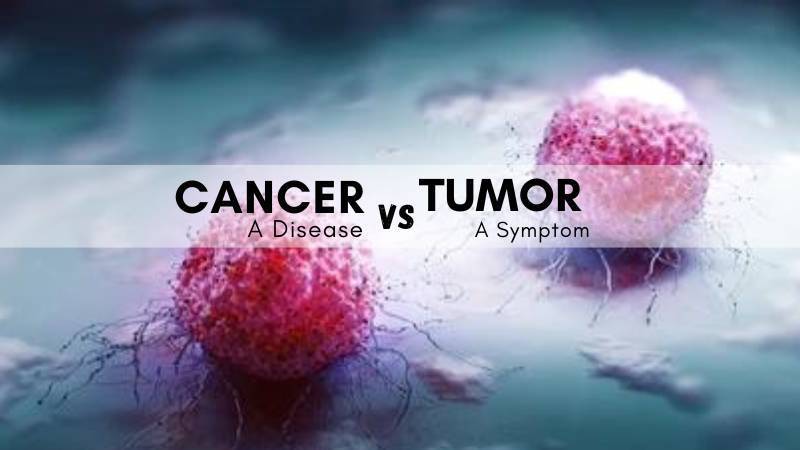Overview
When it comes to surgery for breast cancer, a general guideline suggests that it is ideally performed within a timeframe of 31 to 90 days following the initial diagnosis.
This carefully allocated window allows for comprehensive diagnostic testing, informed decision-making, and ensures that the outlook and prognosis are not compromised.
In this article, we unravel the intricacies of this path, shedding light on the factors that shape the timeline and offering insights to navigate this transformative period.
Thorough Diagnostic Journey
After a breast cancer diagnosis, it is crucial to conduct a series of thorough diagnostic tests to gather comprehensive information about the cancer’s characteristics and extent.
These tests may include
- Imaging scans
- Biopsies
- Consultations with specialists
Allowing sufficient time for this diagnostic journey ensures a comprehensive understanding of the cancer’s stage, grade, and potential for spread, laying the foundation for an effective treatment plan.
Treatment Collaboration
The decision regarding the timeline of surgery is meticulously crafted, taking into consideration various factors.
These factors may include the cancer’s stage, its response to initial treatments like chemotherapy or radiation therapy, the patient’s overall health, and their personal preferences.
An open dialogue with the healthcare team allows patients to actively participate in decisions and ensures a personalized treatment journey.
Urgency and Expedited Surgeries

In certain instances, immediate surgery may be required due to rapidly growing tumors, aggressive forms of breast cancer, or urgent symptom relief. These cases demand swift action to address the cancer’s progression promptly, ensuring the best possible outcomes.
The medical team will work closely with the patient to expedite the surgical process, prioritizing their well-being and comfort.
Impact of Time to Surgery on Breast Cancer Outcomes
The period between breast cancer diagnosis and surgery is crucial for thorough evaluation and preparation. While there is no set standard for the exact timing of surgery following diagnosis, it is important to consider the potential impact of delays on breast cancer outcomes.
Medical teams typically conduct preoperative tests to gain a better understanding of the specific characteristics of the cancer. Additionally, scheduling surgery may take some time, as the healthcare system strives to accommodate various factors and prioritize patients’ needs.
Research conducted in 2016 involving 94,544 individuals with breast cancer sheds light on the relationship between time to surgery and outcomes. The study divided the time to surgery into five 3-month intervals:
- Less than 30 days
- 31 to 60 days
- 61 to 90 days
- 91 to 120 days
- 121 to 180 days
The findings revealed that as the interval between diagnosis and surgery increased, overall survival rates decreased. This indicates that longer delays may potentially allow for the growth or progression of the cancer.
While preoperative evaluations are vital for optimal surgical planning, the study suggests that, whenever possible, a shorter time to surgery should be pursued to improve outcomes. This emphasizes the importance of prompt action and efficient coordination between the healthcare team and the patient.
It is crucial to remember that each case is unique, and the timing of surgery may depend on various factors such as the specific characteristics of the cancer, treatment plan, and individual circumstances.
Open and honest communication with the medical team is key to ensuring that the timing of surgery is appropriately balanced with the need for comprehensive evaluation and personalized care.
Determining an Optimal Timeframe
When considering the impact of time to surgery on breast cancer outcomes, it becomes crucial to identify how long is too long to wait.
While the ideal timeframe is subjective and dependent on individual circumstances, there are research findings that provide valuable insights.
Conflicting research exists on this topic. For instance, studies conducted in 2017 and 2022 indicate that the outlook for individuals with breast cancer remains unaffected until the time to surgery exceeds 60 days.
A comprehensive review conducted in 2018 examined various studies on the time to treatment and its impact on outcomes. The review suggested that a time frame of less than 90 days from diagnosis to surgery was optimal for achieving favorable outlooks.
In support of this, a 2020 study focused on the effects of time to the first breast cancer treatment. It concluded that a longer interval of 31 to 90 days for the initial treatment, allowing for thorough diagnostic testing and decision-making, did not compromise overall survival rates.
It is important to recognize that individual cases may vary, and the optimal timeframe for surgery may depend on factors such as cancer characteristics, treatment plan, and patient preferences.
These research findings serve as general guidelines, highlighting the importance of prompt action and minimizing delays while ensuring comprehensive preoperative assessments and informed decision-making.
Primary Goal

The primary goal of surgery for breast cancer is twofold:
- To remove the tumor
- To prevent the cancer from recurring
The recommended type of surgery depends on various factors such as the type and genetic profile of the breast cancer, the extent and aggressiveness of the cancer, biomarker presence, your medical history, and personal preference.
There are two general types of breast cancer surgery:
Breast-conserving surgery (BCS): This procedure involves removing the tumor along with some surrounding breast tissue while preserving the remaining breast tissue. BCS is often followed by radiation therapy.
Mastectomy: A mastectomy involves removing the entire breast, sometimes including surrounding tissues.
Following surgery, additional breast cancer treatments, known as adjuvant therapy, may be recommended to eliminate any remaining cancer cells and reduce the risk of recurrence.
Adjuvant therapy can include
It’s worth noting that in some cases, one or more of these treatments may be administered before surgery to shrink the tumor. This is referred to as neoadjuvant therapy.
Overall, the goal of breast cancer surgery is to remove the tumor, minimize the risk of recurrence, and optimize long-term outcomes. The specific approach and treatment plan are tailored to each individual’s unique circumstances and preferences.
Other factors That Affect Treatment Outcomes
Treatment outcomes in breast cancer are influenced by various factors beyond the timing of surgery. These factors include:
Specific type of breast cancer: Different types of breast cancer have distinct characteristics and responses to treatments. Understanding the specific subtype is crucial for tailoring an effective treatment plan.
Stage and grade of the cancer: The stage indicates the extent of cancer spread, while the grade reflects the aggressiveness of the cancer cells. These factors play a significant role in determining treatment options and predicting outcomes.
Biomarkers: Biomarkers such as hormone receptors (estrogen and progesterone receptors) and human epidermal growth factor receptor 2 (HER2) status provide valuable information about the behavior of the cancer cells and guide targeted therapies.
Genetic changes: Genetic mutations, such as BRCA1 and BRCA2 gene mutations, can impact treatment decisions and overall prognosis. Genetic testing helps identify these changes and guides personalized treatment approaches.
Treatment response: How the cancer responds to the recommended treatment, including surgery, chemotherapy, radiation therapy, hormone therapy, targeted therapy, or immunotherapy, can significantly influence outcomes. Regular monitoring and adjustments to treatment may be necessary based on individual response.
Cancer recurrence: If breast cancer recurs after initial treatment, it presents new challenges and may require a different approach to manage and control the disease.
Medical history, age, and overall health: Individual characteristics, including medical history, age, and overall health, can impact treatment options, tolerance to therapies, and overall prognosis. A comprehensive evaluation of these factors helps tailor treatment plans to the specific needs of the patient.
Each person’s breast cancer journey is unique, and healthcare teams consider all these factors to provide an individualized outlook and treatment approach.
By comprehensively assessing these variables, medical professionals can guide patients through their treatment with realistic expectations and optimize their chances of positive outcomes.
FAQs
Is there a specific timeframe or deadline for scheduling surgery after a breast cancer diagnosis?
No, there is no specific timeframe or deadline for scheduling surgery after a breast cancer diagnosis. Timing is determined on a case-by-case basis.
Can delays in surgery after diagnosis affect the prognosis or outcomes of breast cancer?
Delays in surgery after a breast cancer diagnosis can potentially affect the prognosis or outcomes of the disease. Prompt surgical intervention is generally recommended to minimize the risk of cancer progression and improve overall outcomes.
Is a mastectomy better than BCS?
The choice between mastectomy and breast-conserving surgery (BCS) depends on individual factors and preferences. There is no universally “better” option as both can be effective treatments. It is important to discuss with your healthcare provider to determine the most suitable approach for your specific case.
Should I be concerned if my surgery is scheduled later than the recommended timeframe?
If your surgery is scheduled later than the recommended timeframe, it’s important to discuss your concerns with your healthcare provider. They can provide insights into the reasons for the delay and address any specific risks or considerations related to your situation. Trust in their expertise and guidance for personalized recommendations.
Can I undergo surgery immediately after diagnosis, or are there usually additional tests or evaluations required?
In most cases, additional tests and evaluations are required before undergoing surgery for breast cancer. These tests help assess the extent and characteristics of the cancer and guide treatment decisions.
Are there any alternatives to surgery for breast cancer treatment?
While surgery is the primary treatment for breast cancer, alternative treatment options may be considered based on factors such as the cancer stage, type, and individual preferences.
These alternatives can include systemic therapy, radiation therapy, neoadjuvant therapy, and cryoablation. The appropriateness of these options depends on individual circumstances and should be discussed with a healthcare provider.
Also Read






